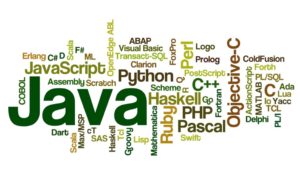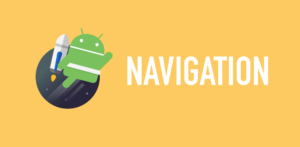Another programming language!
During the last year while searching and exploring code examples of Android’s new technologies like Jet pack architecture components our team noticed that more and more code on the git hub is posted only in Kotlin – the new programming language for Android platform. And that raised a question in our team, is this new kid on the block something that can speed up our app development even more and we should start to prepare for another transition? And as usually we started to explore and see what benefits the new language can bring. But for me all this recalled my own experience with programming languages and how I was switching between different languages.
My first encounter with programming happened at high school and the first language I learned was BASIC. The friendship with BASIC lasted only a year. When I started to study at university I switched to Pascal. Yes, that was quite long time ago. At that time most of the software I was producing was dealing with mathematics and were command line utilities. I didn’t see a much difference between those two languages except that now in Pascal along the variables I had to declare their types. The course at university was organised so that students had to start with some high level language and gradually switching to C/C++. So far in the length of time I was switching from simple to more complex languages, and at that point of time it didn’t seem that switching to more complex language would ease the programming process, on the contrary the C/C++ comparing with BASIC made it harder to write software that solve mathematical problems. And that was the first time when I learned about the Programming domain. C/C++ gave me the ability to write software for almost any domain. But at the same time for some tasks more high level languages were preferable. After C/C++ followed SQL and Java, then C# and JavaScript. When I switched from C++ to Java the same task could take 10-25% less coding. Now the operations with text were easier and all pointers were gone. When I learned C# and that was the time when Microsoft released C# version 2.0, but Oracle had Java 1.5 I noticed in cases where callbacks and events where used in C# I could type 5-10% less code. But this increase in productivity was only in certain programming domains, like Windows applications. In other areas like embedded systems or OS C was still the main option, and the arise of new languages didn’t really affect those fields. The main conclusion I made for myself was that if a new language emerges, then most likely it speeds up development only in certain domain.
And what about Kotlin? The creators of Kotlin JetBrains claim that replacing Java with Kotlin will allow developers be more productive. After playing with Kotlin little bit and converting some existing Android classes into Kotlin we saw that it could really be the case. Then we looked at oficial Kotlin’s documentation where Kotlin is compared with Java and although some of the features we are really missing in Java like Data classes, Null-safety and Extensions we didn’t really see anything groundbreaking. And we were about to put Kotlin aside for this project since :
- our team doesn’t feel yet so comfortable with Kotlin that we could produce code that is easy readable and follow best practices. To master the language requires time.
- The productivity we would gain would not outweigh the time we would spent on learning the new language
We assumed if we want to switch to the new language we have to convert the whole application code base to the new language and keep coding in Kotlin, but then we noticed this tutorial saying that we can mix Java and Kotlin in one project. And we saw this as a good opportunity some of the files write in Kotline. And one of the first candidates for Kotlin we chose entities and DTO. It requires to learn very few new syntax and classes can be made much smaller thanks to getting rid of getters and setters. We decided to spend some time on learning Kotlin and once we learn the feature that really reduces the number of code lines and brings something valuable in code comparing with Java we will write that peace of code in Kotlin. In such way we hope we can keep the same development speed while learning new language and at some point of time start to reduce the development time comparing with Java. It worked well in time when I switched from C/C++ to Java and now it looks like it is time to switch from Java to Kotlin.
Migrating to the new navigation system
In my last article I mentioned that we migrated to the new Android’s navigation system that is a part of Android Jetpack components. This time I want to share some implementation details. Usually in my posts I don’t really like to share the actual code, but only concepts, since there are plenty of implementation examples for the particular concept, and I don’t want to repeat what the others already wrote, I rather prefer to explain the reasoning behind the one or another decision. But while migrating to the new navigation system our team has faced a few challenges, that was not possible to resolve just by reading available documentation and copying code examples, therefore I think some implementation details we came up with might help someone who is striving to master the new navigation system.
Problem
After all our Fragment and Activity analysis we came to conclusion that we should have several activities In our application which would serve as hosts for set of Fragments. And the features we used to group by the fragments were:
- common master layout
- common UI logic
- common use case
So we started to explore the documentation and look for code examples, that would help us to understand how to implement the navigation from one navigation graph to the other graph hosted in different activities. And very quickly we realized that the documentation and examples available on the Internet are heavily focused around a single Activity application and navigation between the fragments hosted in one navigation graph. Although official Android documentation mentions that the new navigation system supports Activities as destinations. The biggest challenge was to find a way how to assign the start destination to navigation graph at runtime depending on various parameters. In our app user should be able to create a sport event and later edit it or delete it. All fragments related to sport event we decided to put in one navigation graph. But the start destination in this graph depends on whether user wants to create a new sport event, edit previously created sport event or see other user’s sport event. So we could not assign the start destination at design time in navigation graph but we had to do it at runtime. Since we could not find enough information how to do it, we started to consider other solutions.
Solution
Spending hours on reading documentation and exploring examples we started to think maybe we should use only one Activity. And put all UI logic from the other Activities in this one and show/hide the parts in UI which are needed/not needed for active fragment. But very soon it became clear that this universal hosting activity is getting very big and it is hard to read it and we have to add additional logic for hiding and showing views in Activity. The hosting activity became something opposite we were striving for – smaller and more manageable classes. So we dropped this idea and started to consider moving the views from Activities to Fragments, that Fragments would contain all the necessary views and UI logic and hosting Activity would be left only with NavHostFragment. That would mean that views like BottomNavigationView and Toolbar now would be located in several Fragments. We could ofcourse use include tag but that still would not remove the need to repeat the same include tags in several fragments. So we didn’t really like this idea either, since it looked like we are violating the DRY (Don’t Repeat Yourself) principle. And we got back to the idea about several activities. This time in order to find a solution we started to dig in to the navigation components source code, and after awhile we came up with the following implementation that allows assign a start destination to a navigation graph at runtime:
private void initNavGraph() {
NavHostFragment navHostFragment = (NavHostFragment) getSupportFragmentManager()
.findFragmentById(R.id.sport_activity_nav_fragment);
NavInflater inflater = navHostFragment.getNavController().getNavInflater();
NavGraph graph = inflater.inflate(R.navigation.nav_sport_event);
String sportEventId = getIntent().getStringExtra(EXTRA_SPORT_EVENT_ID);
long calendarEventId = getIntent().getLongExtra(CalendarContract.Events._ID, -1);
if (calendarEventId == -1 && sportEventId == null) {
graph.setStartDestination(R.id.editMySportEventFragment);
} else {
graph.setStartDestination(R.id.bookSportEventFragment2);
}
this.mNavController = navHostFragment.getNavController();
graph.addDefaultArguments(getIntent().getExtras());
this.mNavController.setGraph(graph);
}
The above method creates new navigation graph and sets the needed start destination, and passes arguments we set in Intent when started the hosting Activity. In such way we can pass needed arguments further to the start destination. And finally we set this new navigation graph with defined start destination and arguments in navigation controller.



